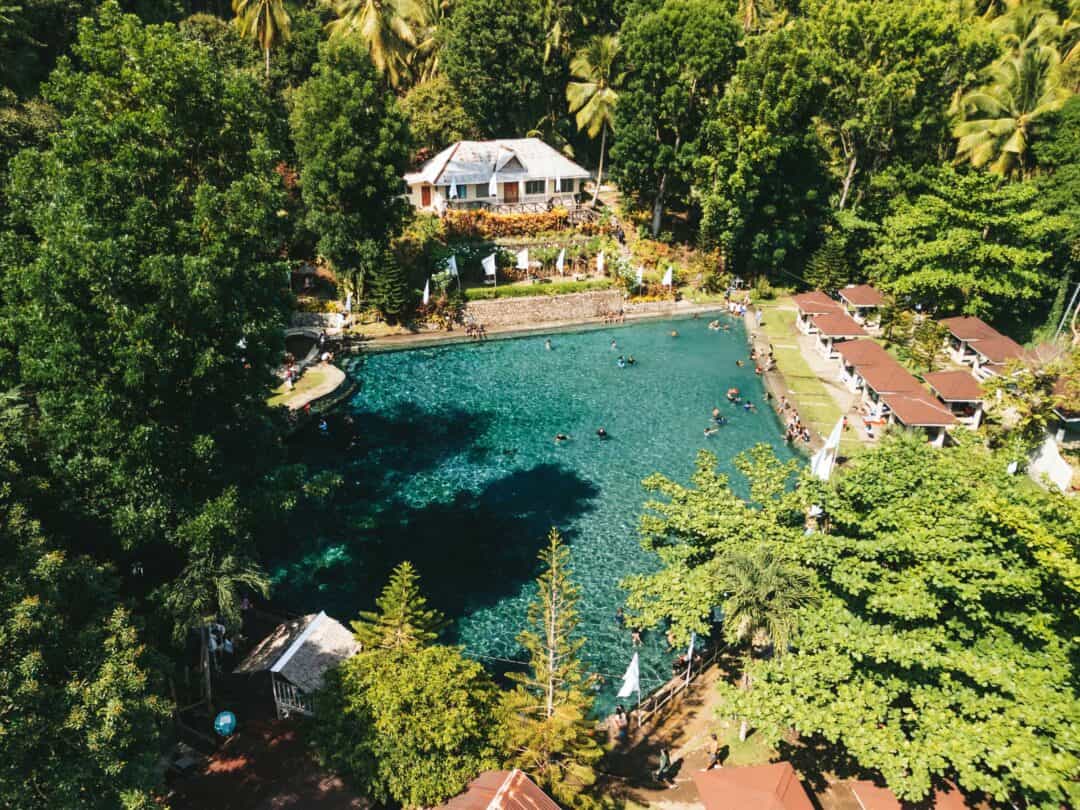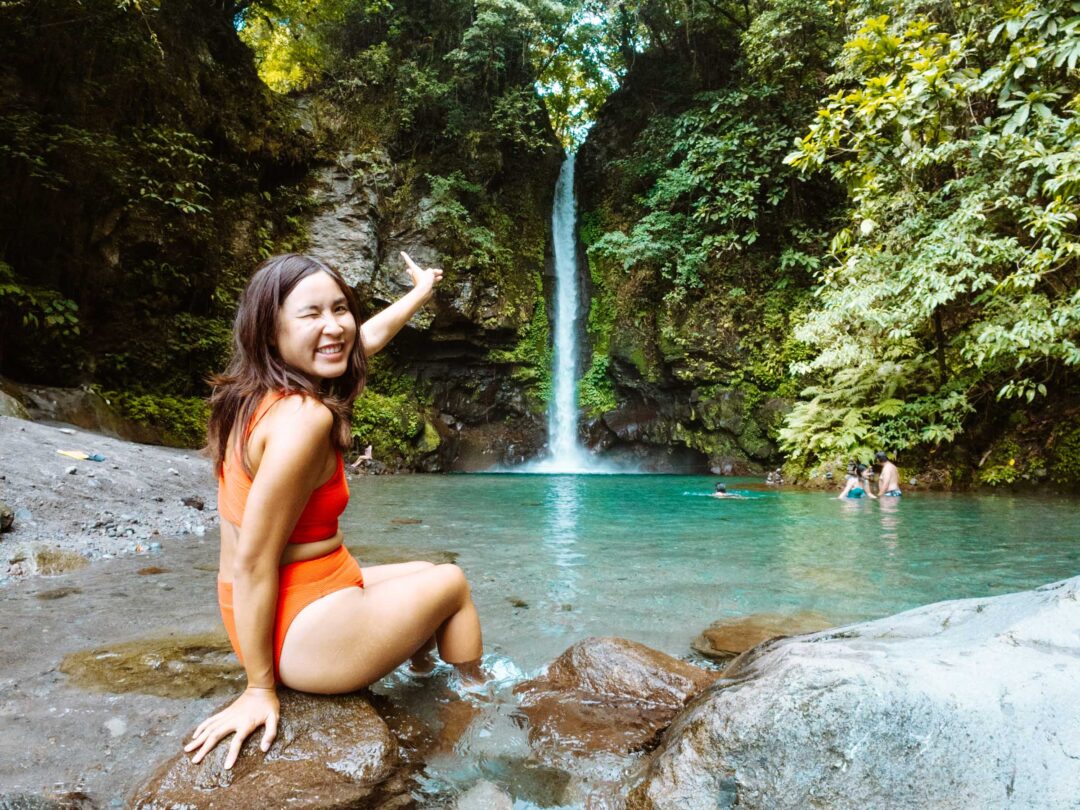In 1871, the eruption of Mount Vulcan reshaped Camiguin forever. But while many parts of the island were buried in lava, the Cemetery of Bonbon instead sank beneath the sea. Now resting on the ocean floor, this unique place is now known as the Sunken Cemetery.
We visited and snorkeled the Sunken Cemetery and put together this guide to help you know what to expect there. We’ll share everything you need to know—whether you’re planning to just visit the monument or dive into the underwater world that now covers the old cemetery.


Sunken Cemetery Complete Guide
There are three different ways to experience the Sunken Cemetery. I’ll go over each of them below.
1. Sunken Cemetery Viewpoint
Your first option is to view the Sunken Cemetery from the viewpoint.
The cliff on the shore near the Sunken Cemetery offers a fantastic view of the cross rising from the ocean. While it may not be much of an adventure, it’s a perfectly acceptable way to see the site. Best of all, it’s completely free to go to the Sunken Cemetery viewpoint.

2. Sunken Cemetery Boat Ride
Your second option is to take a boat out to the Sunken Cemetery.
You can hire a boat at the Municipal Tourism Center, which is across the street from the viewpoint. The ride lasts just a couple of minutes, dropping you off directly at the Sunken Cemetery platform for an up-close view of the monument.
A boat ride to the Sunken Cemetery costs 150 pesos and the boat fits up to 4 people.
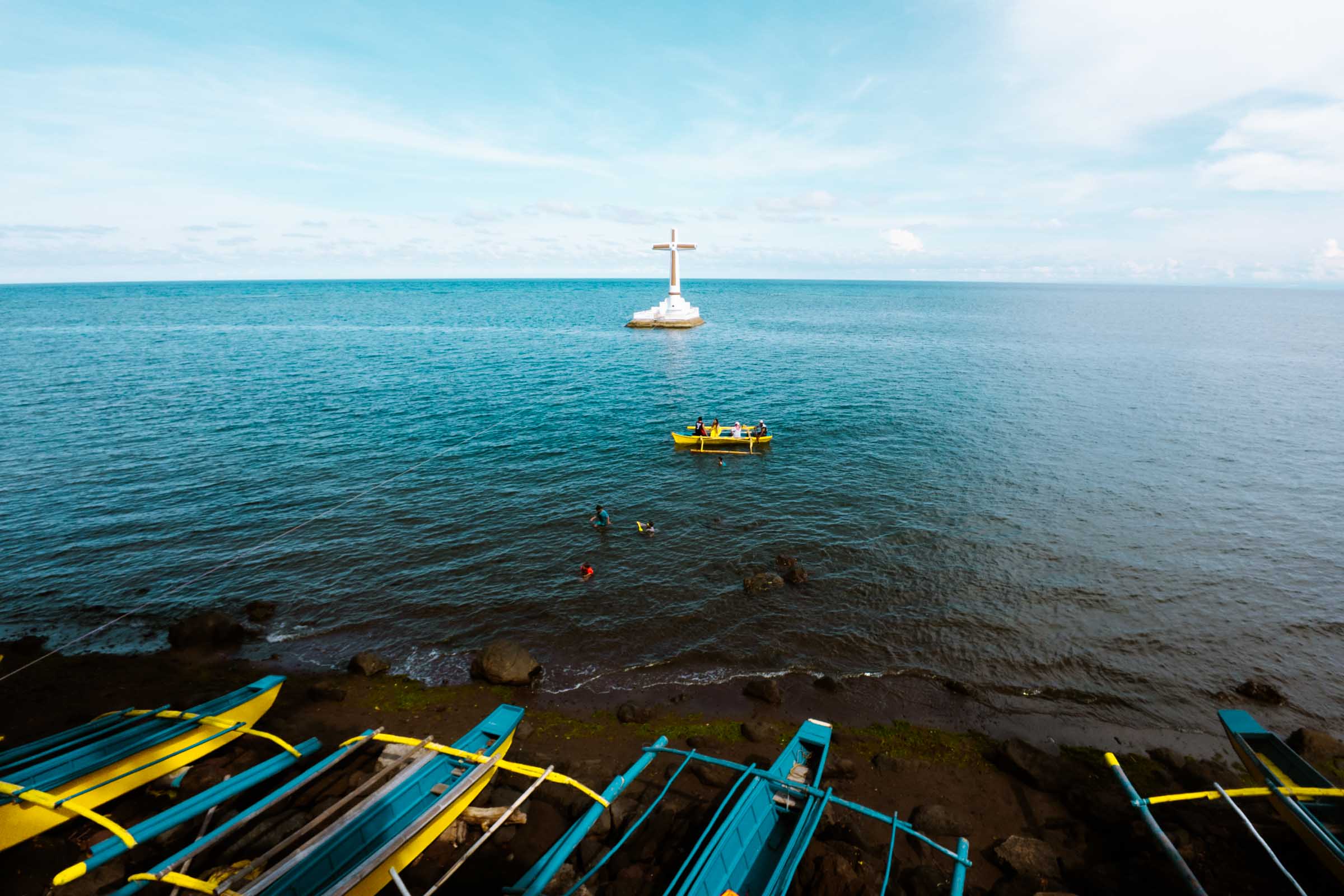
3. Sunken Cemetery Snorkeling
Your third option—and in our opinion, the best way to experience the Sunken Cemetery—is to snorkel there.
While the monument itself is interesting, the real wonders are found beneath the surface. In the ocean lies a coral reef teeming with marine life. You will also explore the old cross, which now rests underwater. Additionally, this area is home to colorful giant clams, which for us were the highlight of the snorkeling at the Sunken Cemetery.
It costs 100 pesos per person plus 150 pesos for a guide to snorkel at the Sunken Cemetery. If you need snorkeling gear it costs 150 pesos to rent a snorkel, mask, and fins.


How to Get to the Sunken Cemetery
The Sunken Cemetery is located along the Camiguin Circumferential Road in Catarman. If you’re traveling by motorbike, you can park for free at the viewpoint along the road.
I’ve included the location of the Sunken Cemetery below so you can easily find it.
How to Snorkel at the Sunken Cemetery
Snorkeling at the Sunken Cemetery is an adventure that reveals a side that most visitors miss. You’ll see the old cross submerged beneath the waves and giant clams resting on the sea floor.
If you want to find the old cross and giant clams while snorkeling at the Sunken Cemetery, you need to hire a guide. Believe us, we’re usually the first to skip the guide, but it would be hard to find either of these things out there without a guide.
I’ve marked the location of the Municipal Tourism Center below, where you can hire a guide to snorkel at the Sunken Cemetery.
After meeting your guide, you’ll head to the snorkeling entry point for the Sunken Cemetery, located at the beach just below the viewpoint. A staircase will take you down to the beach, where you’ll enter the water and start swimming. As you swim over the coral reef, you’ll pass the sunken cemetery and venture out even further.

The first stop is the giant clams. These creatures are massive and they resemble enormous pieces of coral that also move around. There are a few different giant clams, and they all look much different from each other, in both shape and color.
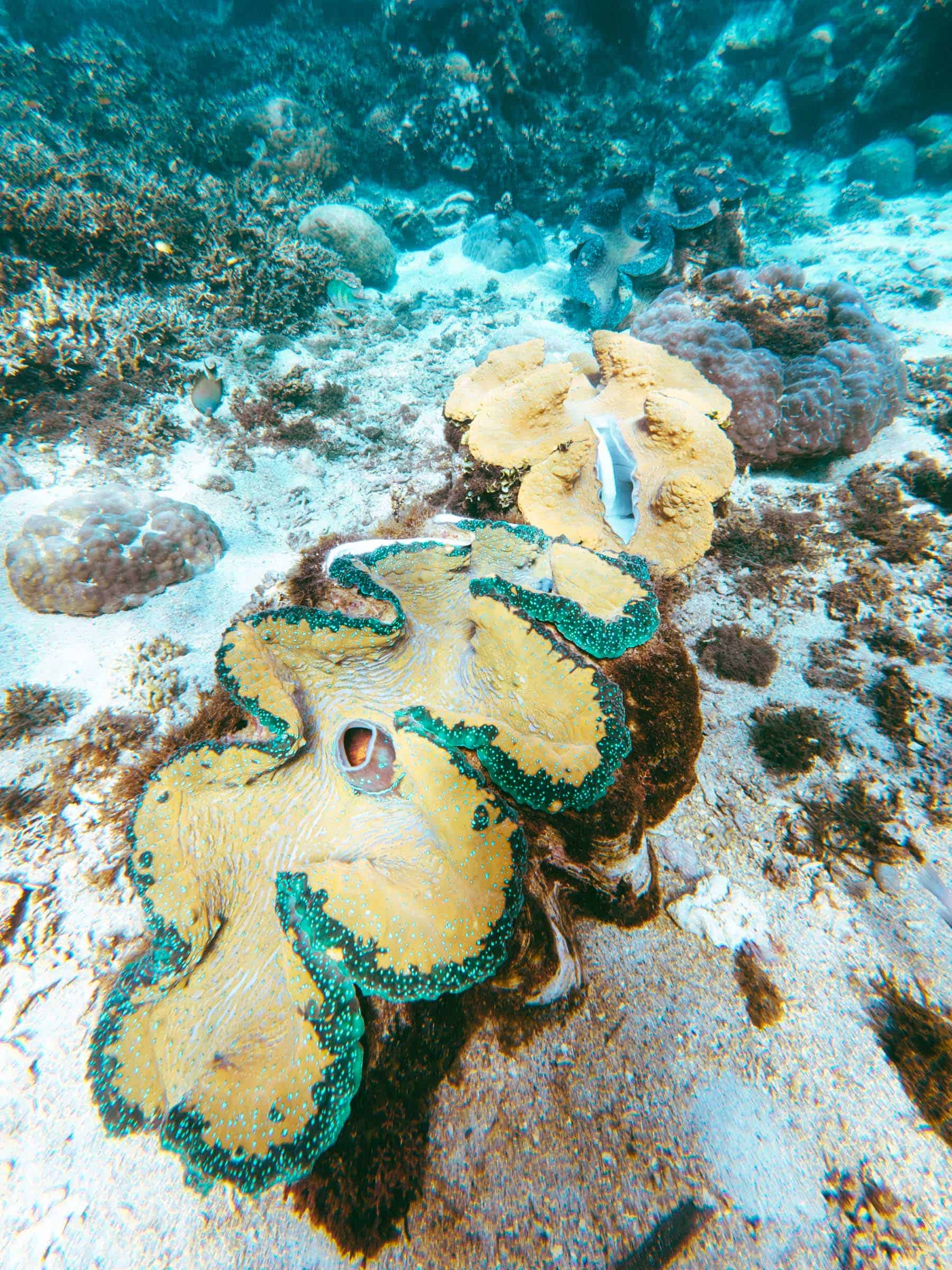
Next, your guide will take you to the old cross, which now rests underwater in the ocean. This massive concrete structure will eventually be reclaimed by the sea, much like the cemetery itself.
After visiting the old cross, you’ll swim back to shore. On the way, you can stop at the Sunken Cemetery marker and climb onto the concrete platform to check it out up close.
Is Snorkeling with the Giant Clams Safe?
Snorkeling with the giant clams at the Sunken Cemetery is generally safe. The Giant clams are stationary creatures and pose no direct threat to you. They remain anchored to the ocean floor, passively filtering water for nutrients.
If, for some reason, you stick your hand in a giant clam, you’ll likely be fine since they close slowly and aren’t strong enough to cause serious harm. But it’s still a bad idea to touch a giant clam in any way—giant clams are sensitive creatures, and disturbing them can stress them.
What Happened to the Sunken Cemetery?
If you’re expecting to see an actual underwater cemetery while snorkeling at the Sunken Cemetery, I regret to inform you that the cemetery itself is no longer visible.
Over time, the reef has taken over, covering the graves with a thriving bed of coral. Instead of headstones, you’ll be greeted by marine life and coral formations. Although some reports suggest that a single tombstone remains, we didn’t encounter it during our snorkel.
Snorkeling at the Sunken Cemetery: Our Experience
Every time we snorkel in the Philippines, it feels like our minds are blown all over again. Just when we think it can’t get any better, we stumble upon another incredible spot. This time, it was the Sunken Cemetery.
We first visited the Sunken Cemetery the day we arrived in Camiguin. It’s a popular place to watch the sunset on the island. It’s also easy to get to, and free to enter. From the viewpoint, you can see the cross rising out of the sea, but aside from that, the only other things to do at the viewpoint are to browse a few souvenir shops.
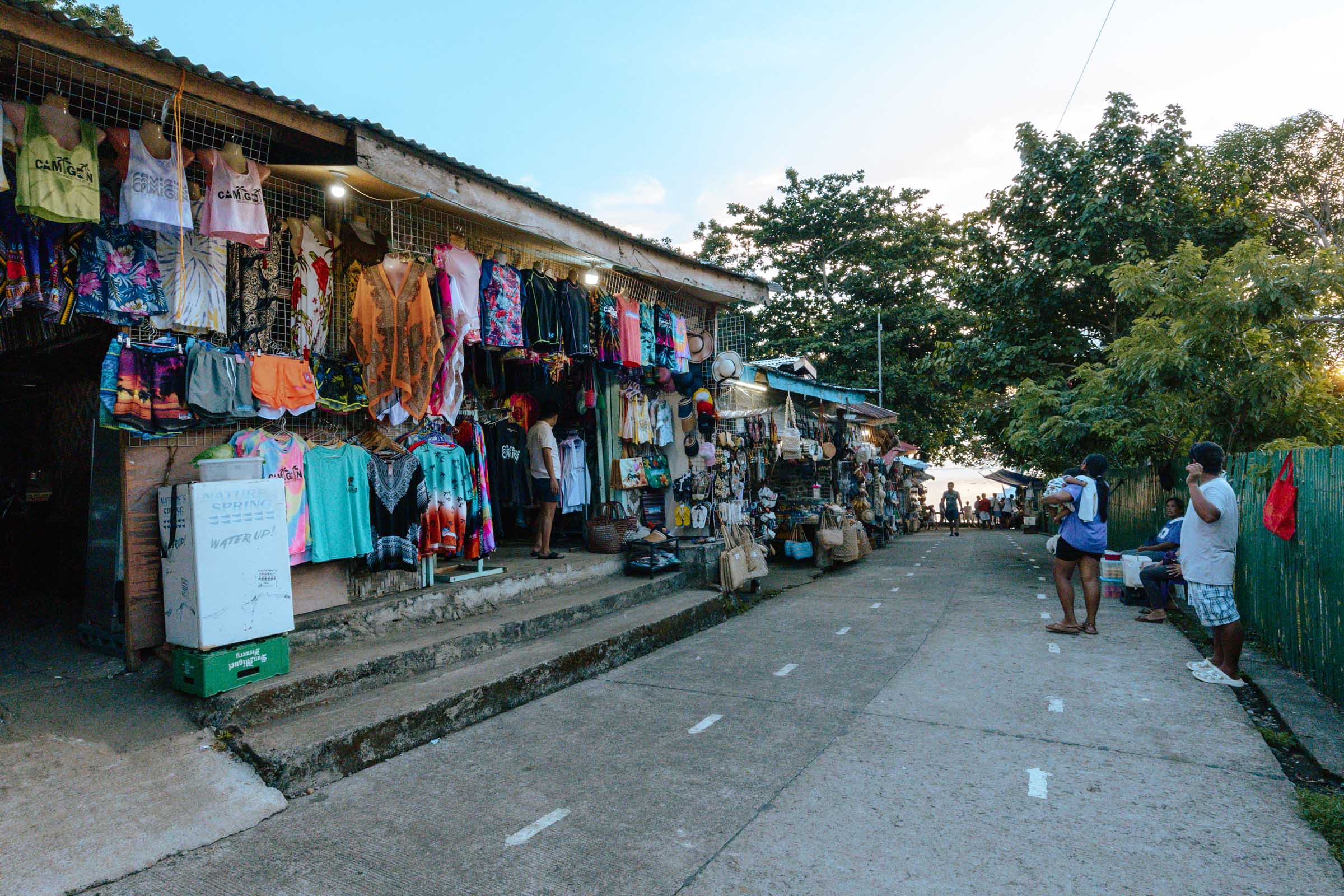
But while we were eating dinner a few nights later, we heard from some locals that the real highlight of the Sunken Cemetery lies beneath the ocean. You can visit the old cross underwater, see an epic coral reef, and snorkel next to giant clams in their natural habitat. Once we heard this, we knew we had to check it out ourselves.
The next day we went to the Municipal Tourism Office at 8 AM to hire a guide for snorkeling. We are usually the first people to skip the tour guide, but we had no clue where to snorkel to find the old cross or giant clams.
At the Municipal Tourism Office, we met Marcelo. He was the only guide available and wasn’t the friendliest or most patient. But it would be hard to find anything snorkeling on our own so we needed him.
Once we got in the water it didn’t take long until we were in a sea of endless coral. There were tons of fish swimming around and colorful details lit up the sea floor.

As we swam over the reef, our guide seemed to leave us behind. I’m not sure if he thought we were okay on our own or if he was just in a hurry, but it took us a while to catch up to him.
When we finally caught up to our guide, he pointed down below the surface. There, beneath us, were the giant clams. At first, I was in disbelief. They looked just like huge pieces of coral. But upon closer inspection, I realized they were indeed enormous clams.
I was surprised by how huge they were—they really live up to their name. There were several clams sitting on the sea floor. Each clam looked a bit different. It made me wonder if they were different species that have all made their home in this spot.
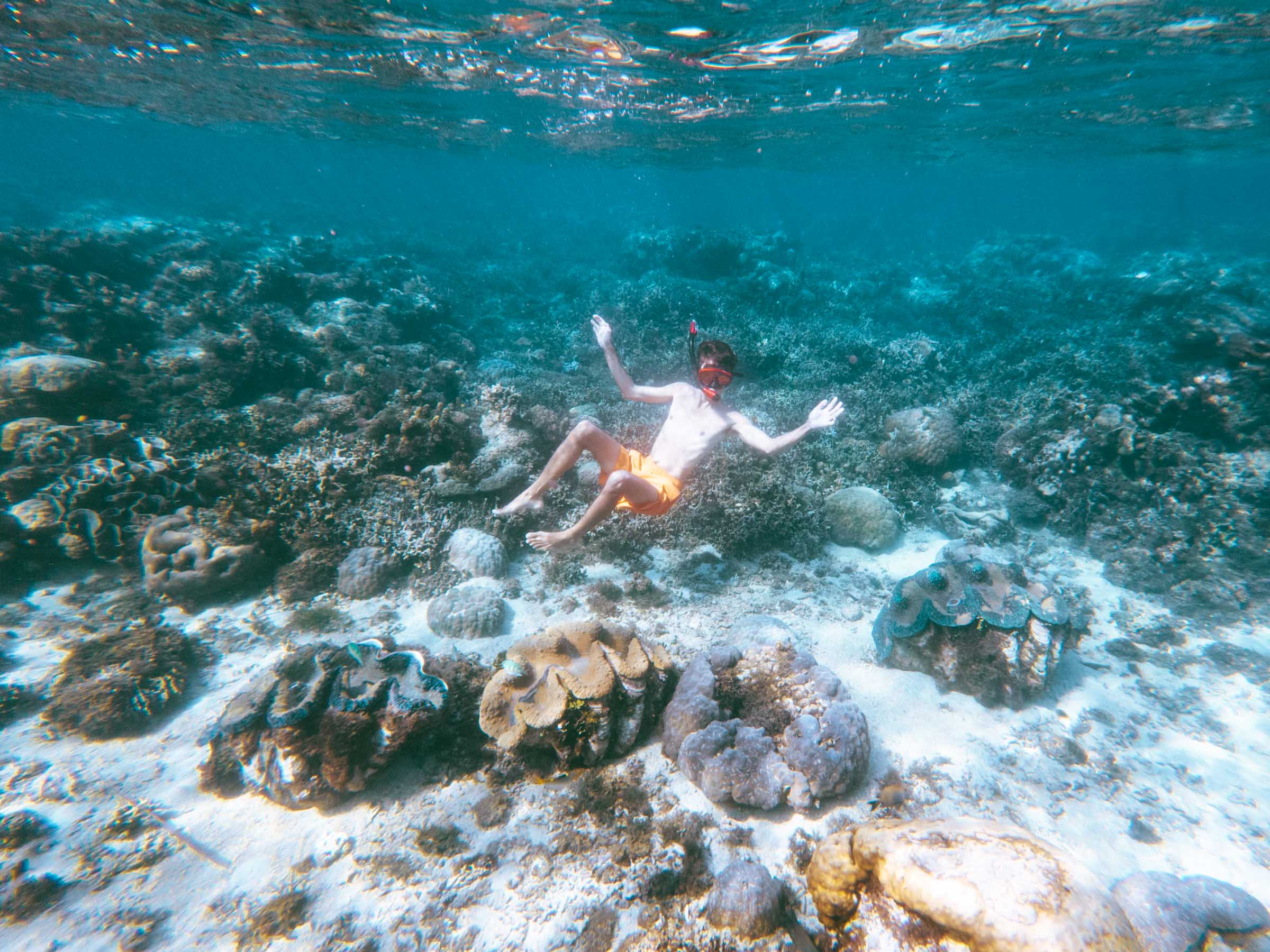
Our next stop was the old cross, which now rests below the surface. The swim to the old cross is even further out away from shore. As we swam toward it, the tide began to rise and the current got stronger, making it hard to swim in the water.
By the time we reached the old cross, waves had begun rolling in. I swam around it to get a sense of its size, but the force of the waves kept pushing me toward the massive concrete structure. We spent a few moments at the old cross before turning back.
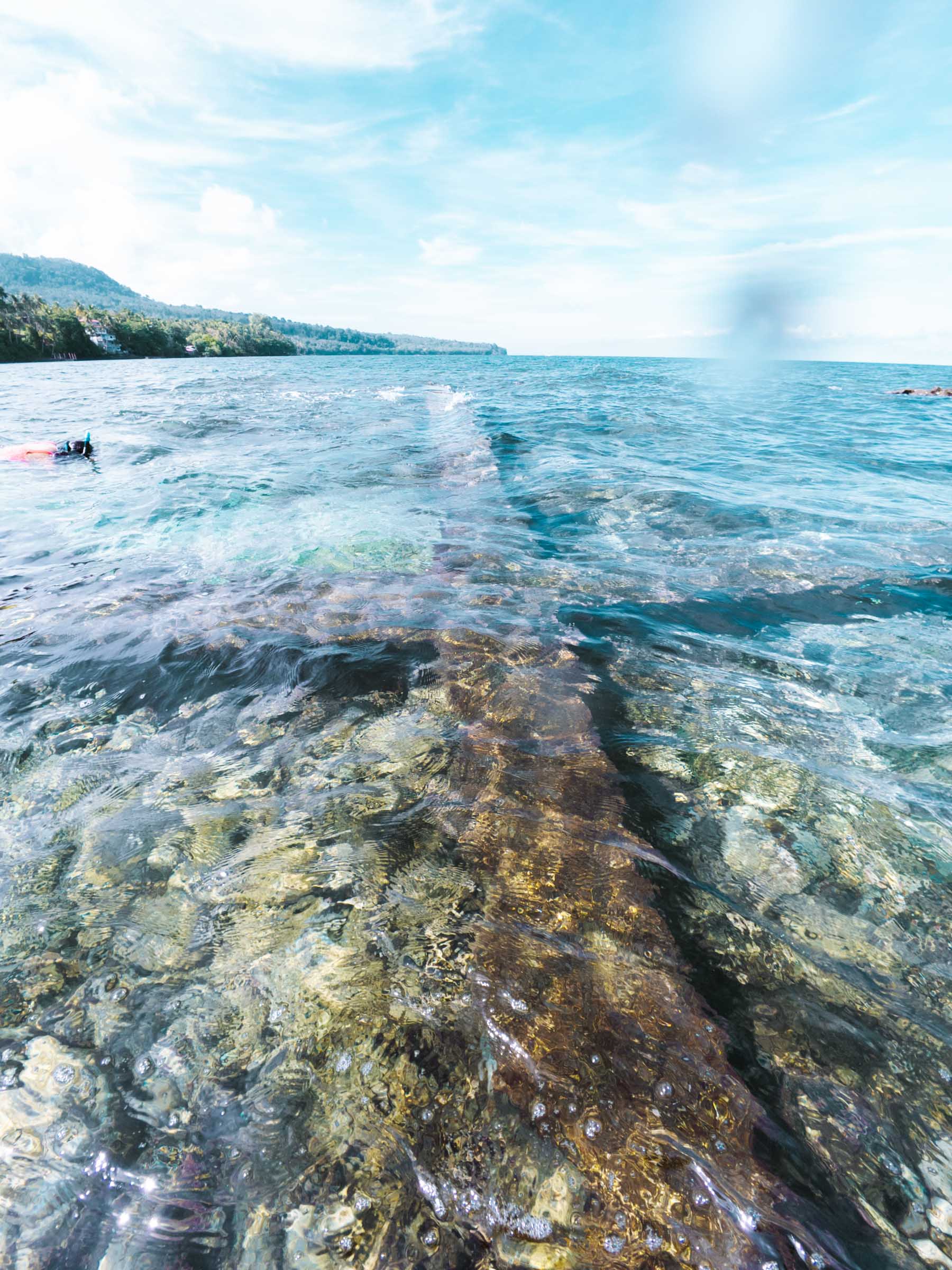
The swim back to shore was exhausting. Between fighting the ocean current and the sheer distance we had to swim, we were pretty exhausted by the time we returned to shore. I recommend being a strong swimmer if you decide to go on this adventure.
We stopped at the Sunken Cemetery monument along the way back to shore. As we climbed out of the water, a few people who had arrived by boat looked at us oddly. It seems that not everyone snorkels there, so it felt special to visit the Sunken Cemetery by swimming rather than taking a boat.
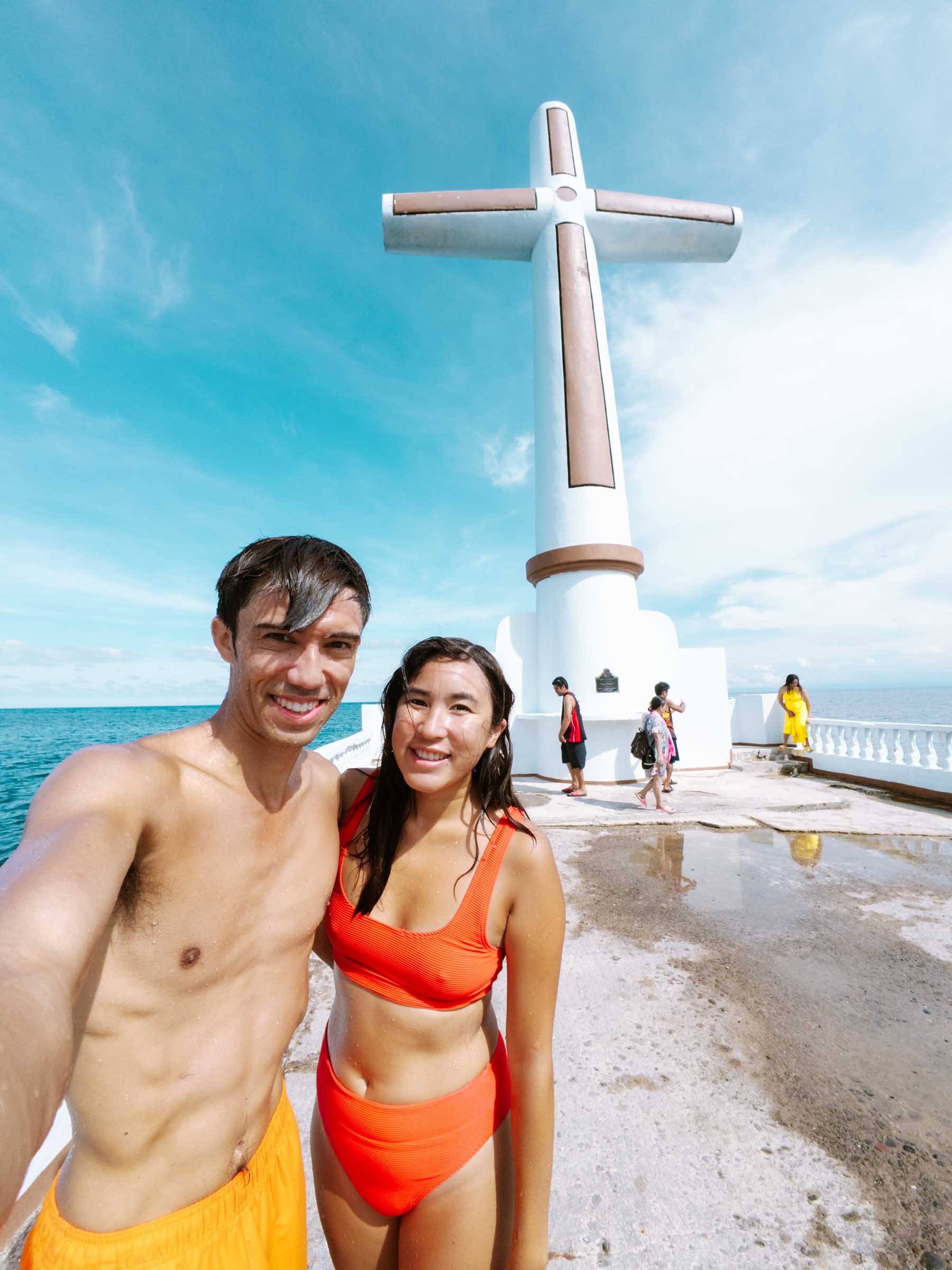
Sunken Cemetery History
The Sunken Cemetery has a fascinating history which leads to its appeal as a tourist site.
The eruption of Mount Hibok-Hibok in 1871 created Mount Vulcan, a vent cone that spewed lava and devastated the town of Cotta Bato, which is now the site of modern-day Catarman. During this eruption, the ground beneath the Cemetery of Bonbon sank, resulting in its submersion underwater. Today, the Cemetery of Bonbon is known as the Sunken Cemetery.
But what happened to the cemetery itself? Over time, the cemetery markers and structures were engulfed by the ocean. Using the headstones as foundations, coral grew over the site, leaving nothing visible. Everything now lies beneath the reef. While a few remnants from the cemetery still exist, they are gradually being overtaken by the coral. During our snorkeling experience, we didn’t find any remains of the cemetery below the water.
Sunken Cemetery Photos
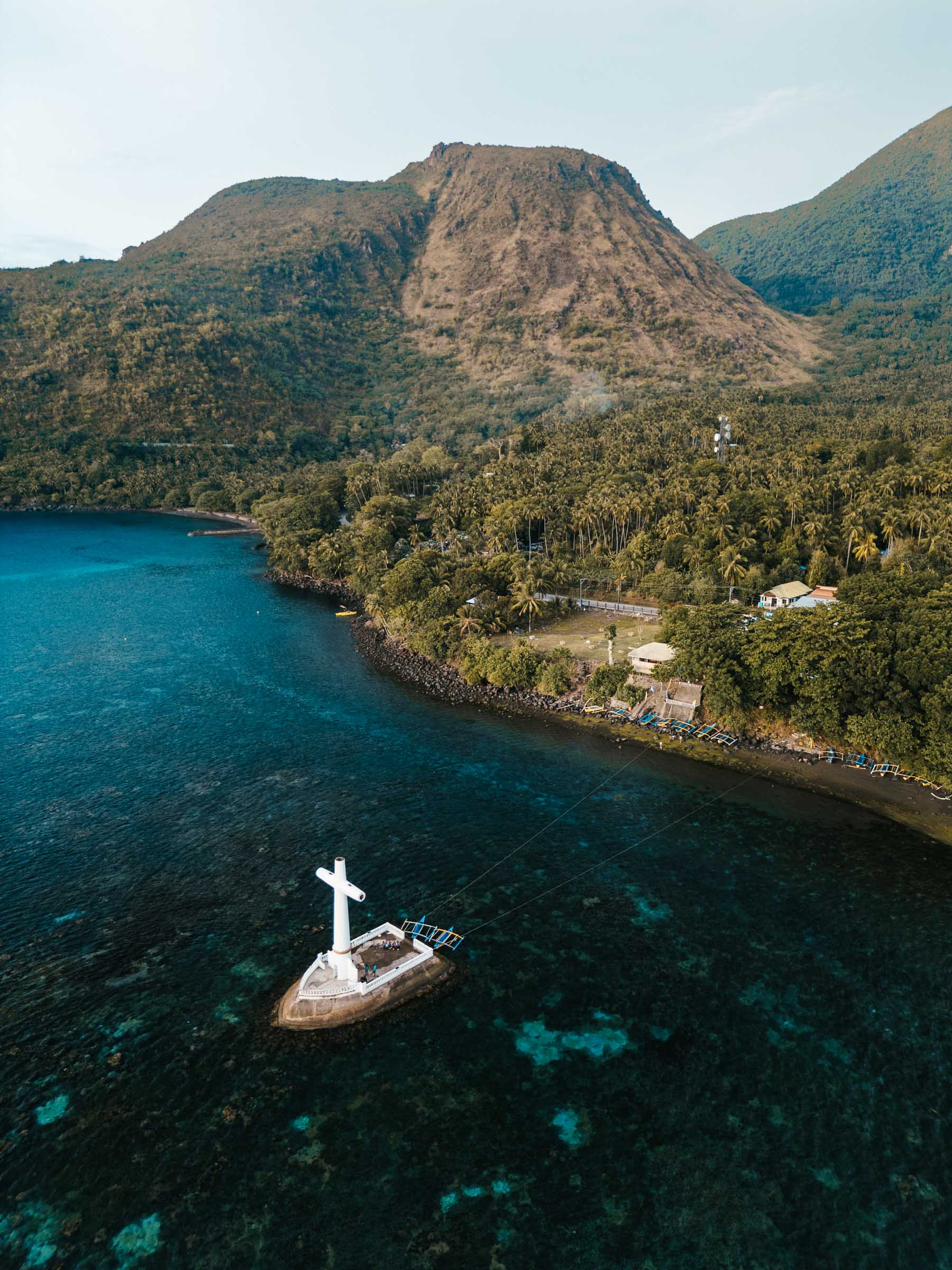
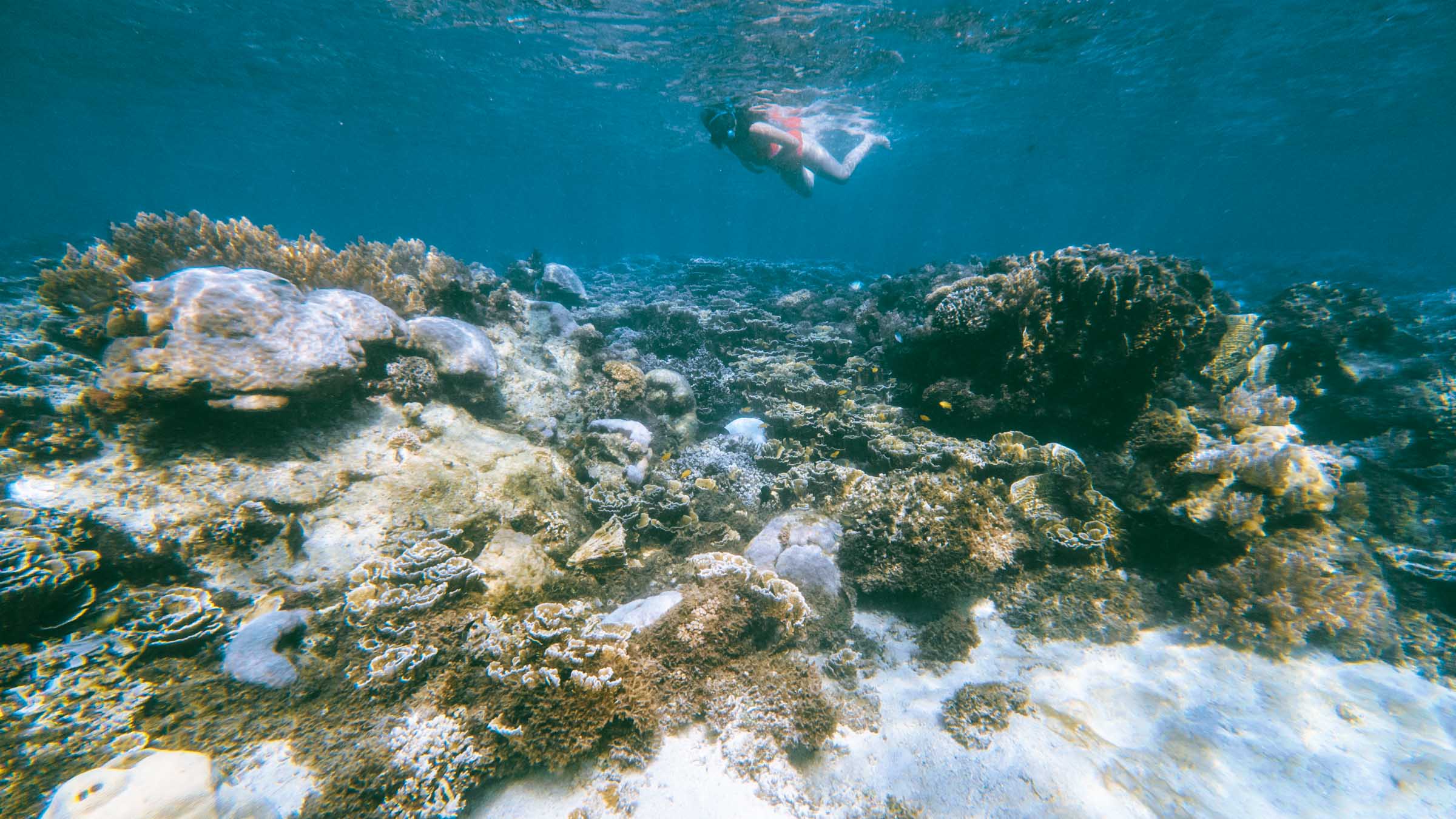

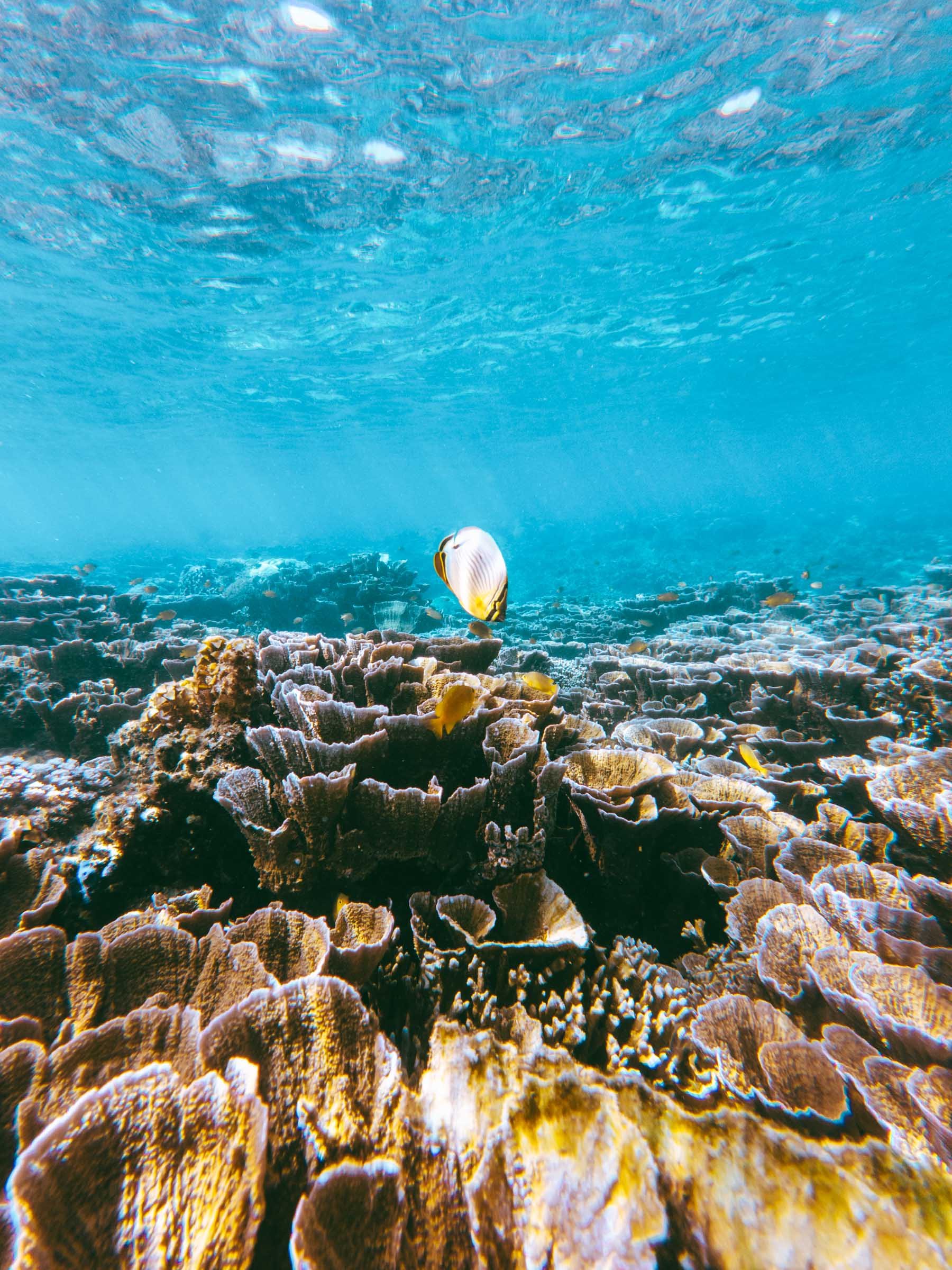
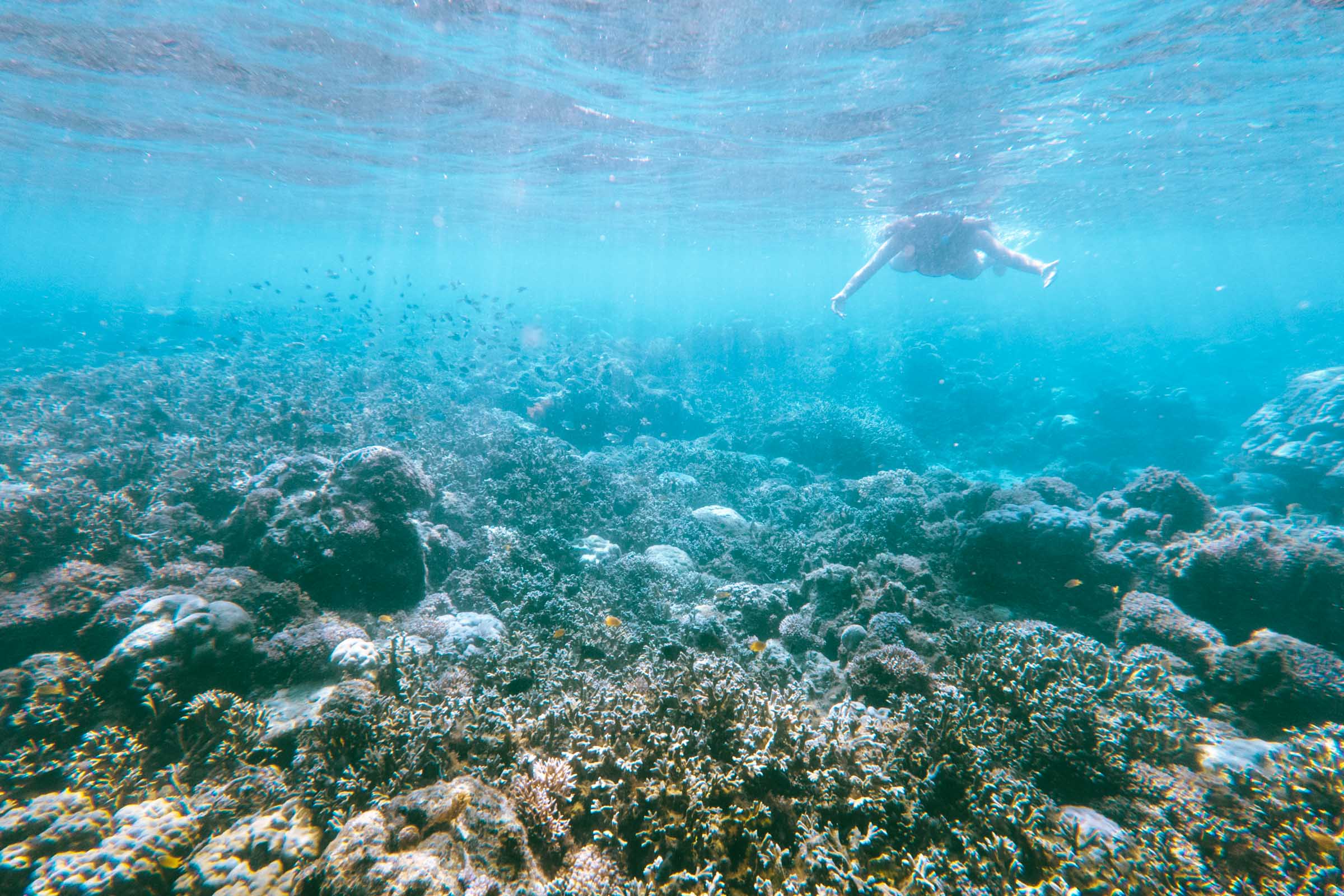


Where to Stay in Camiguin
Most accommodations in Camiguin are located on the north side of the island near Mambajao. This is convenient because Mambajao is the biggest town in Camiguin and has the island’s only airport, making getting to and from Camiguin much easier.
Here’s where we would stay if we visited Camiguin again. It’s a place called Nypa Style Resort. We actually found this place because we had dinner at their restaurant one night, and their staff was kind enough to give us a tour of some of their vacant rooms. This place is set near Mambajao with beautifully kept grounds and immaculately clean rooms.
If you prefer to find your own place to stay, you can visit Booking.com to explore all your accommodation options in Camiguin.
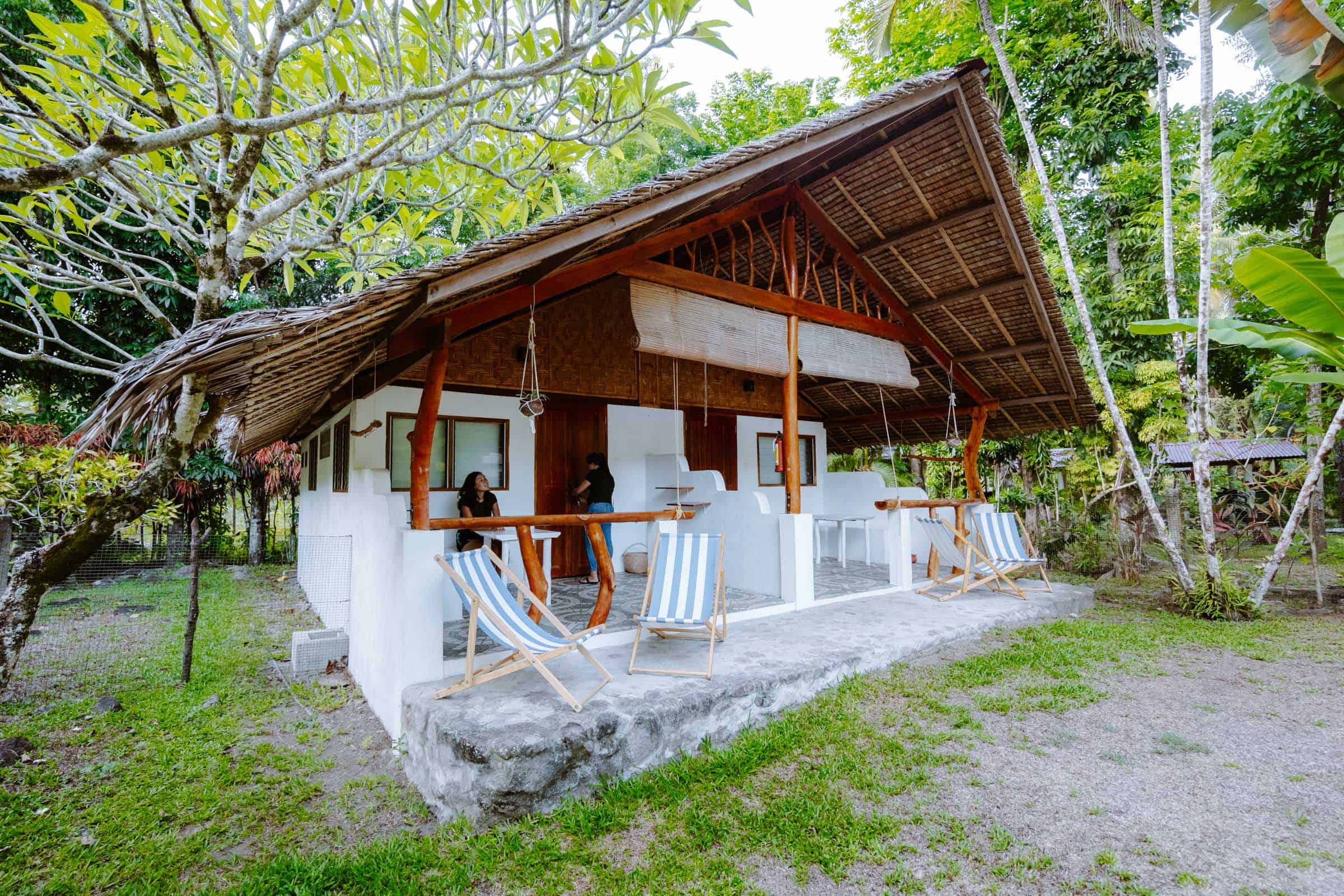

What to Pack for Camiguin
Here are some of our must-have items you might not have thought of when packing for a trip to Camiguin.
- Crocs: During our time in Camiguin, I was so glad to have Crocs to protect my feet when exploring rocky terrain and chasing waterfalls. They are the ultimate shoe in the Philippines for a reason – many Filipinos wear them too!
- Snorkel: With all the amazing snorkeling spots in Camiguin, it helps to have your own snorkel set like this one if you plan to do some underwater activities! Plus, you won’t need to worry about renting a snorkel, which may be of… questionable quality.
- Sunscreen: For some reason, sunscreen is expensive in the Philippines and I’ve even encountered places selling fake sunscreen that doesn’t work! So I recommend bringing your own sunscreen to Camiguin.
- Dry Bag: With all the sand, salt, and water flying everywhere during our adventures, I was so glad to have a dry bag to keep all my things safe from the elements!
- Travel Towel: In my opinion, a travel towel like this one is super necessary for a trip to Camiguin! It packs down nicely and was there for me anytime I went swimming, or just needed to brush sand or dirt off.
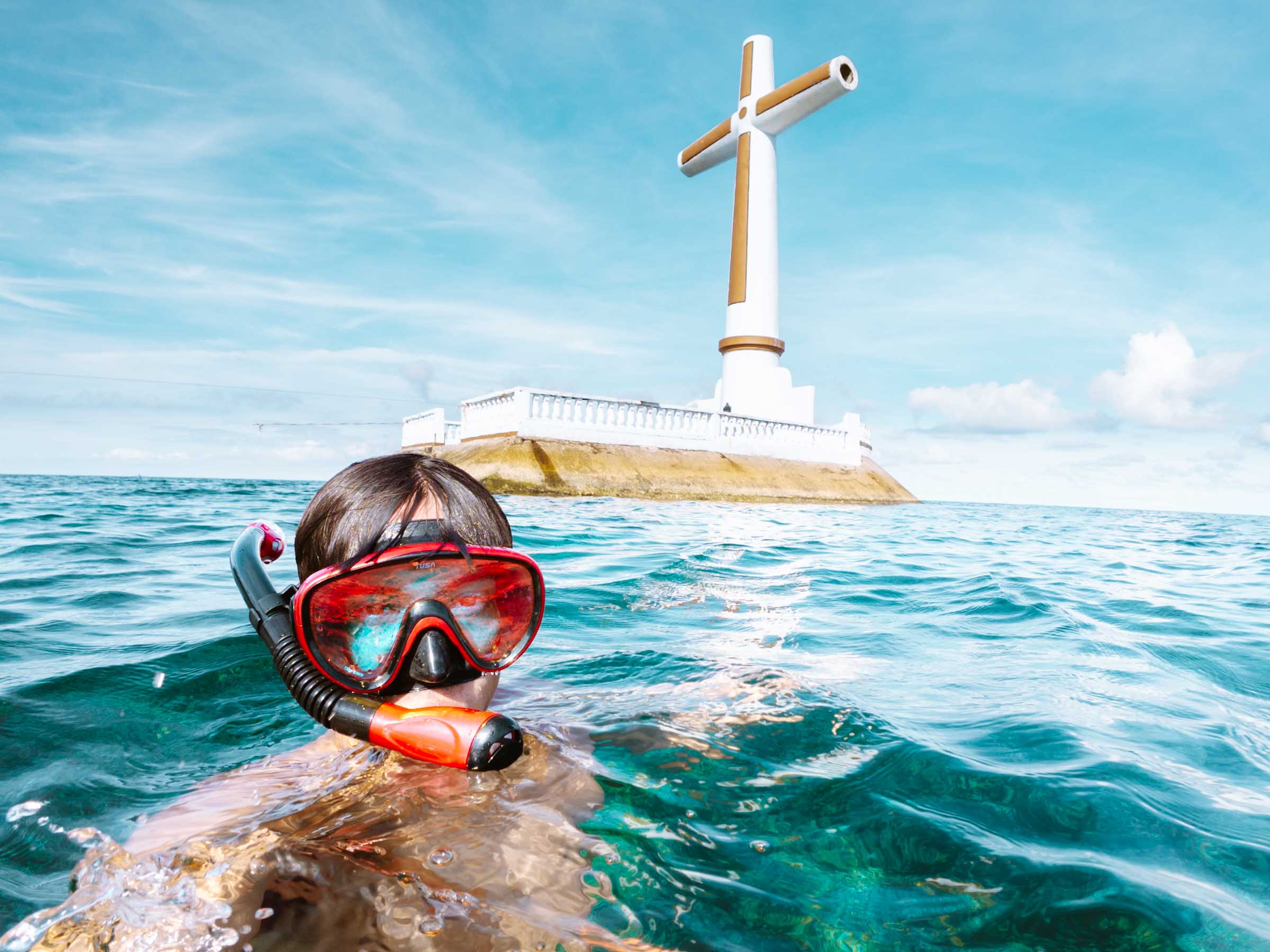
Our Camiguin Google Maps Locations
Want a free map of all our favorite spots in Camiguin? Sign up in the box below and we’ll deliver one right to your inbox, plus our top tips to help you plan your Camiguin trip!
Are You Following Our Camiguin Blog Series?
We spent 8 days in Camiguin and found so many things to do there—from waterfalls to beaches, cold springs, and coral reefs. To help fellow adventurers, we’ve put together guides to the best places we found. You can check them out by clicking the links below.
- Start planning your trip here: Camiguin Travel Guide
- Our Ultimate Guide to Camiguin: 16 Awesome Things to Do in Camiguin
- How to plan your Camiguin trip: 3 Days in Camiguin: The Perfect Camiguin Itinerary
- Our favorite place to snorkel in Camiguin is The Sunken Cemetery
- Our favorite day trip in Camiguin is Mantigue Island which is just a short boat ride away
- Camiguin’s best beach is at White Island
- Our favorite waterfall in Camiguin is Tuasan Falls
- If you want to walk through the mangroves on a web of boardwalks check out Katunggan Park
- How to rent a motorbike in the Philippines
I hope you enjoyed our guide to the Sunken Cemetery in Camiguin. Feel free to leave a comment below if you have any questions.





